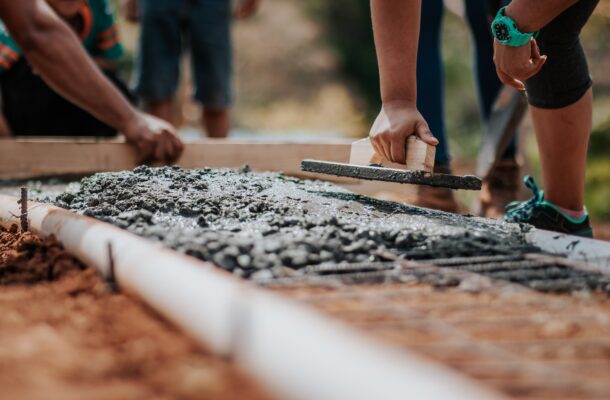Concrete jungle

History tells us that the Romans used concrete extensively over 2000 years ago and it has been used in various ways ever since around the world. The difference is that Roman concrete is still viable today in aqueducts, viaducts and buildings whereas that we use becomes too weak for safety after less than 100 years.
14 billion cubic meters of concrete was produced around the world in 2022 . The land surface area of Earth is 510 million square kilometers. Simple maths tells us that this equates to almost 27,451 cubic meters per square kilometer or enough concrete to cover the entire globe to a depth of 2.7 cms. Production also produced 8% world’s greenhouse gasses.
Concrete comes in many forms, but is essentially is a mix of cement, sand, water and aggregate. Portland cement is the most common type of cement in general use around the world and was developed from other types of hydraulic lime in England in the early 19th century by Joseph Aspdin,
The process required to turn limestone into cement is the most energetically expensive. Even complex and efficient kilns require 3.3 to 3.6 gigajoules of energy to produce a ton of clinker and then grind it into cement.
New Ingredients in the Mix
A wider range of fine grained inorganic materials that have pozzolanic or latent hydraulic properties are now added to the concrete mix to reduce costs or improve its properties. Crushed pozzolanic materials will react chemically with calcium hydroxide at ordinary temperatures to form cement. These mineral admixtures can replace or supplement traditional Portland cement made from limestone in some blended cements, and can include fly ash and blast furnace slag.
These substitutions use by-products of other industrial processes that would otherwise go to waste, and help reduce the energy and emission impacts caused by the use of cement. Recycling can help improve the circular economy aspects of the construction industry, whose ever growing demand exacerbates issues around raw material extraction, waste generation and landfill practices.
Fly ash, a by-product of coal-fired electric generating plants, can be used to partially replace Portland cement by up to 60% by mass. The properties of fly ash depend on the type of coal burnt, but most siliceous fly ash is pozzolanic, while calcareous fly ash has latent hydraulic properties. Ground granulated blast furnace slag, a by-product of steel production, can also be substituted for Portland cement by up to 80% by mass and has latent hydraulic properties.
Silica fume, a by-product of the production of silicon and ferrosilicon alloys, resembles fly ash, but its particles are just a hundredth of the size. This results in a higher surface-to-volume ratio and a much faster pozzolanic reaction. Silica fume is used to increase strength and durability of concrete, but generally requires the use of superplasticizers to improve its workability, as otherwise it sets too fast.
High reactivity metakaolin produces concrete with strength and durability similar to concrete made with silica fume. While silica fume is usually dark grey or black in colour, high-reactivity metakaolin is usually bright white, making it the preferred choice for architectural concrete where appearance is important.
Carbon nanofibers can also be added to concrete to enhance compressive strength and improve the electrical conductivity required for strain monitoring, damage evaluation and self-health monitoring. Such carbon products have also been added to make concrete electrically conductive for deicing purposes.
An Ever Stronger Future
As anyone who’s resurfaced their own driveway will know, concrete must be kept moist during curing in order to achieve optimal strength and durability. During curing hydration occurs, allowing calcium-silicate hydrate to form, meaning that concrete grows stronger over time, rather than weaker.
Over 90% of the mix’s final strength is typically reached within four weeks, with the remaining 10% taking years or even decades to establish. The conversion of calcium hydroxide in the concrete into calcium carbonate from absorption of CO2 over several decades further strengthens the concrete and makes it more resistant to damage.
Concrete has been the foundation of our build environment for over two millennia, but its per capita use is three times higher than it was forty years ago. In an age of global warming, reducing the carbon emissions associated with its production is a growing priority for companies and governments alike, with the use of alternative ingredients, renewable energy and recycling all likely to be part of the mix.

Alan Stevenson spent four years in the Royal Australian Navy; four years at a seminary in Brisbane and the rest of his life in computers as an operator, programmer and systems analyst. His interests include popular science, travel, philosophy and writing for Open Forum.















